This is part five of our look at comics, cartoons and language– today focusing on the comic book

Art by Don Newton and Alfredo Alcala
“Jeff and Tom are an item? Isn’t that cradle-robbing?”
“Oh, total Batman and Robin, you know.”
That same online gay and LGBTglossary consulted in part 4 gives the following definitions:
BATMAN AND ROBIN
(n., adj.)
1. Inseparable.
2. A leader and his sidekick.
3. Daddy-Son relationship; an older man with a younger lover.
This last usage chimes with Dr Frederick Wertham’s warnings about the Caped Crusader and the Boy Wonder.

Dr Wertham, struck speechless by the sheer depravity of comic books
“They live in sumptuous quarters, with beautiful flowers in large vases, and have a butler.It is like a wish dream of two homosexuals living together[…] the Batman type of story may stimulate children to fantasies.”— Dr Frederic Wertham, Seduction of the Innocent (1954)
Where on earth would anyone get THAT idea?
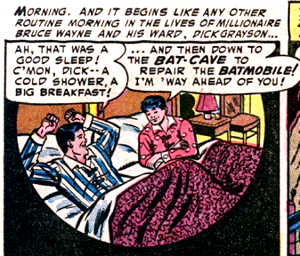
I guess some people just have dirty minds. How could anyone misread the following panel, for instance, as evidence of paedophilia and of social disease?
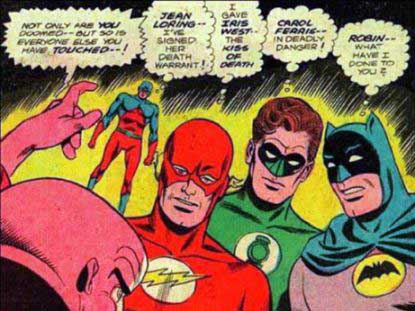
Art by Mike Sekowsky and Bernard Sachs; script by Gardner Fox
I should can the sarcasm, I guess; the new discipline of Queer Studies has legitimated speculation on how dynamic this duo actually was.
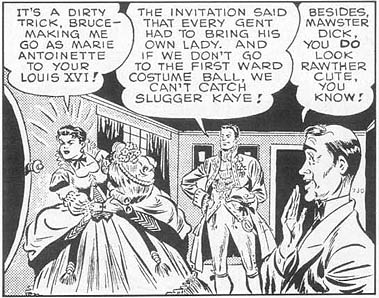
Oh, come on, Robin. You know you love it.
***************************************************************************
“The second, more skeptical, group
argues that Medvedev continues to play Robin to
Putin’s Batman, surrounded by a team loyal to the
Premier and checked by Putin’s dominance over the legislature and regional
elites”.— U.S. embassy dispatch from Moscow, as revealed by Wikileaks
Definition 2 applies to the above quote.

Art by Cain & Benson for the NY Times, based on a drawing by Frank Quitely — thanks to Bleeding Cool
“Yeah, he’s barely a year out of his MBA, and already he’s the boy wonder that’ll save the company.”
Since his appearance in Detective Comics # 38, Robin has added ‘boy wonder’ to the vocabulary of derision for over-praised striplings comprising ‘wonder boy’, ‘golden boy’ and ‘fair-haired boy’.
“They’re firing at least half the staff.”
“Holy breadline!”
In the 1960’s, the success of the Batman t.v. show led to the fad of exclaiming ‘Holy(something vaguely apposite’) in reaction to a piece of news, in imitation of the onscreen Robin. But note that this annoying tic wasn’t used in the comics until after the show introduced it.
I call this a knock-on effect: sayings associated with a comics character that originate in other media, just as Superman’s ‘Truth, Justice, and the American Way’ came from the radio show.
It’s through a similar knock-on effect that, since the first Spider-Man movie came out, a new quote has appeared on the scene. With great box-office comes great quotability.
With great power, comes great responsibility – the billionaires’ giving pledge.
Recently, 40 billionaires came out and pledged to give the majority of their wealth to philanthropy. The money is not being funneled to one cause – each billionaire gets to give their money to the cause, or causes, of their choosing. As the Bush tax cuts are set to expire and billionaires are giving away up to 99% of their wealth, many people are wondering if the rich, because they have more, have a greater responsibility to give.
–Southern California Public Radio
Art by Steve Ditko
Of course, Stan Lee’s dictum– “with great power there must also come– great responsibility” isn’t particularly original; click here for Mark Evanier’s thorough discussion of possible sources.
What is spidey sense? Your patient just looks wrong. Or DOESN’T look wrong, but you have a gut feeling that something is about to go seriously wrong. Generally, and this is really the point of my post, you’ve got nothing to hang your hat on as far as an assessment finding or anything from the patient’s history, and that makes spidey sense problematic: IF you are working with a physician who trusts spidey sense (some do, from some nurses, and with varying degrees of acceptance), you don’t have much time to make your case.
— from the nursing blog notratched.net
Spider-Man counts among his powers his ‘Spider-sense’ that warns him of danger:

Art by Steve Ditko
It’s come to be an idiom for instinctual, intuitive alertness.
“Surprisingly, 45% of our online customers are silver surfers”

Art by Jack Kirby and Joe Sinnott
Jack Kirby‘s creation, the Silver Surfer, has given its name to a marketing category: online shoppers over the age of 45 are known as silver surfers. (They have silver hair and they surf the Internet…get it?)
The Marvel super-heroes haven’t contributed much to the common language. Occasionally a rock-climber will be compared to Spider-Man, a massively powerful football player to the Hulk (although “hulk” and “hulking”, of course, predate the character); an idealistic patriot might playfully be dubbed Captain America (as was Peter Fonda in the 1969 film Easy Rider.)
That’s about it.
We leave the superheroes now, but a final word of warning to the linguistically unwary: superhero and supervillain are terms trademarked jointly by Marvel Entertainment and DC Comics.
So if ever you are tempted to write:
“Heart surgeon Denton Cooley was considered a superhero of the operating theater”
or that
“A prime supervillain in the financial crisis was Goldman Sachs”
… lie down until the temptation passes.
*********************************************************
“She was disgusted by the male chauvinism rampant among top management. It was like the typical boy’s club: No Girls Allowed.”
Little Lulu, based on the panel cartoon by Marge Henderson, is one of the most esteemed American children’s comic books of all time, thanks to the excellent scripts by John Stanley (1914-1993).
Lulu was a girl of about eight, whose friend/enemy was the boy Tubby. Tubby and his male contemporaries were frankly misogynist in the manner of little boys of the 1950’s. (I should know– I was one of them.) Stanley was sharp and witty in sending up this juvenile patriarchism:
Art by Irving Tripp
Tubby and pals had a clubhouse that displayed the warning sign “No Girls Allowed” (with the ‘s’ backwards).
Feminists have adopted the slogan as an exasperated condemnation of sexist male bonding.
*************************************************************
“That was a fun wedding!”
Here’s a claim I am curious but skeptical about.
Carl Wessler (1913–1989) was one of the most prolific scripters in comic-book history.
One of his strips was Harvey Comics’ Baby Huey, following the antics of a giant, super-strong, dim-witted chick:
Wessler’s claim is that he invented the attributive use of the adjective ‘fun’. In other words, pre-Wessler you’d say ‘That party was fun’, and post-Wessler, ‘That was a fun party‘. (Baby Huey was always making dumb-sounding statements like ‘This is a fun thing!’ or ‘That was a fun explosion!)
Again, I am dubious– but if there any philologists out there who can confirm or deny the claim, I’d be interested to hear from them.
*************************************************************
I was smurfed on World of Warcraft by some top-level wizard.

Created by Peyo (1928–1992), the comics starring the ‘Schtroumphs’ became popular in the USA under the name ‘Smurfs‘.
These tiny blue elves were known for an aspect of their odd language: the frequent use of the word “smurf” and its derivatives in a variety of meanings. The Smurfs replace enough nouns and verbs in everyday speech with “smurf” as to make their conversations barely understandable: “We’re going smurfing on the River Smurf today.”
With a word of such protean meanings, it’s no wonder that its colloquial appropriations are multiple; what is surprising is how sinister they are.
In online forums, a smurf account is created when you sign up on a forum or bulletin board system with a new account other than your primary account: otherwise known as a sock puppet account.
Smurfing, in the context of online gaming, refers to the practice of a well-known or veteran player creating an unknown name, character or login, then using it to play against, defeat, and often humiliate other players.
Structuring, also known as smurfing in banking industry jargon, is the issue of transactions structured to avoid certain record keeping and reporting requirements mandated by law.
The Smurf attack is a way of generating significant computer network traffic on a victim network. This is a type of denial-of-service attack that floods a target system via spoofed broadcasting messages.
All is not dark: a smurf move is a hip-hop dance move, as detailed below:

**************************************************************
“He’s been such a sad sack since his wife left him, moping and moaning.”
The Sad Sack was a strip created by George Baker ( 1915 – 1975) in 1944 for Yank, the Army Weekly.
After the war ended, The Sad Sack ran in newspaper syndication in the United States until 1957. Baker then sold the rights to Harvey Comics, which produced a large number of comic-book spin-offs.
Art by George Baker
The WWII historian and veteran Paul Fussell observes, in his book Wartime (1989):
“The cartoon character Sad Sack of course derives his name from the NCO’s favorite term for a despised subordinate, a sad sack of shit, a bit of nomenclature reducing the addressee to a bag of noisome matter equipped, as if by some accident, with arms and legs.”
Being a sergeant himself, Baker doubtless had experience of many real-life sad sacks: mournful, slobby, put-upon soldiers. Today, a sad sack still describes such miserable moaners.
**************************************************************
“Their company is crumbling around their ears, but their attitude is What, me worry? Total denial.”
Although popularised and kept in circulation by Mad magazine, the slogan ‘What, me worry? is in fact quite old– as is the picture of a fool associated with it.
The face had drifted through American and European pictography for decades:
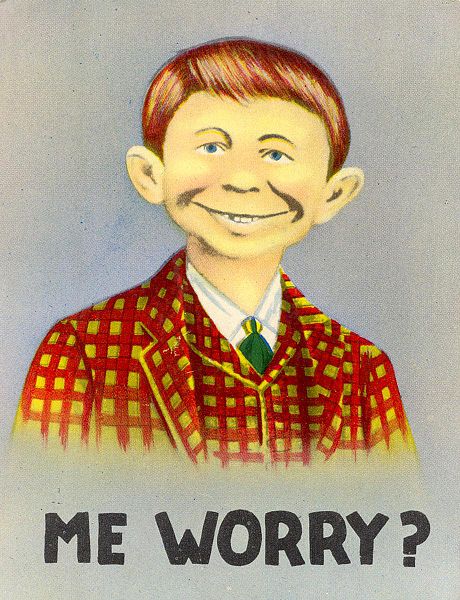
before Mad editor Harvey Kurtzman (1924–1973) spotted it on a postcard.
He took the image and accompanying caption, surrounded it with a decorative border drawn by Will Elder (1921– 2008), and ran it as a back cover:
A lawsuit by the owner of the card’s copyright prompted Mad‘s lawyers to research the history of the image. They found dozens of variations going back to 1896, such as the one below:

As for ‘What– me worry?’, that caption also had numerous variants: ‘Me worry? Nooo’, ‘Daa, me worry?’ and others.
The name “Alfred E. Neuman” derived from comedian Henry Morgan’s radio series. One running gag on his show involved a reference to musician Alfred Newman (1901-70), who scored many films and also composed the fanfare that accompanies 20th Century Fox’s opening film logo.
Kurtzman used the name as an all-purpose placeholder, along with Melvin Cownofsky and others. It wasn’t until issue 30 of the magazine that, in a cover painted by Norman Mingo (1896– 1980) that name, image and slogan were united:

For a magazine replete with word coinages, though, Mad hasn’t contributed much to popular speech.
Words like ‘potrzebie’ and ‘frammistat’ are only intelligible (if that!) to the Mad reader; others, like ‘furshlugginer’ and ‘ganef’ are from the Yiddish and were already current in New York slang.
I’ve found only one example of a genuine contribution, and even then it’s a bit shaky.
“If we blow the deadline, we’re in big trouble—‘ ‘What do you mean ‘we’, paleface? I don’t work for you, remember?”
It’s a well-known joke:
The Lone Ranger and his Native American sidekick, Tonto, are surrounded by hostile Indians. ‘Well, Tonto”, says the Ranger, “we’re really in for it now!” To which Tonto replies, “What do you mean ‘we’– paleface?”
The expression is used as a rebuff to those who presume too much on our common interest.
It appeared in a strip in Mad, written by E.Nelson Bridwell (1931–1987) and drawn by Joe Orlando (1927–1998). Most sources give this as the earliest attribution, but it’s impossible to be absolutely sure with widely-circulated jokes.
I haven’t been able to locate the original strip, but below is a 1970’s illustration of the joke as executed by comics veteran Bill Ward (1919–1998) for a novelty record cover:
****************************************************************
Mad did have a seminal influence on one group– the cartoonists of the 1960’s underground comics.
I can think of only three cases where they’ve contributed to popular speech.
“I haven’t made a big success in my career, but that’s okay– I’ll just keep on truckin’ as I am.”
The below strip by Robert Crumb (1943– ) swept through the counterculture like a forest fire. Crumb took the phrase from an old blues song, where “truckin'” was a euphemism for, ahem, another word that rhymes with truckin’.
It came to be an all-purpose, laid-back salutation.
(Crumb, for good and sufficient reason, came to actively hate it; the only time I spoke to him, he said he’d kill himself if I quoted it.)
************************************************************
The below cite speaks for itself:

This gag saying, coined by Gilbert Shelton (1940– ) for his strip The Fabulous Furry Freak Brothers became a catch-phrase for stoners everywhere.
A potentially dangerous one, as “Dope will get you through times of no money better than money will get you through times of no dope‘ is certainly untrue, as I can testify through my own expe… uh… through the experience of my friends… that is, more acquaintances than “friends”.
*************************************************************
“We’ve stuffed three hundred envelopes, only two thousand to go...Are we having fun yet?’
“Are we having fun yet?”, the war-cry of Zippy the Pinhead, that zany creation of Bill Griffith (1944– ), can be voiced as a phatic communication of high spirits or as an ironic commentary on tedium. It’s been included in Bartlett’s Familiar Quotations.
As Griffith recalls:
- When Bartlett’s approached me in — I forget what year, five or six years ago — I got a call from the editor. And he was going to give me credit for the “Are we having fun yet” saying, but he wanted to know exactly where Zippy had first said it. I did some research (I had no idea), and I eventually found… the strip “Back to Pinhead, the Punks and the Monks” from Yow #2 in 1979… That’s the first time he said, “Are we having fun yet?” Certainly not intended by me to be anything more than another non sequitur coming out of Zippy’s mind.
Griffith is bemused and irritated at the widespread appropration of his jest, as he expresses in the below strip:
click image to enlarge
Griffith expresses perfectly the urgent public service fulfilled by the present series of articles below:
Next installment, we’ll look at panel gags and editorial cartoons.
****************************************************************
This is part five of a seven part series; click here for part 1, part 2, part 3, (dealing with the American newspaper comic strip), part 4 (like this part, looking at comic books), part 6 (treating panel gag and editorial cartoons;) part 7 , dealing with British cartoons; and there’s an index.
****************************************************************
I would like to have a part 8, looking at French, Italian, and other European colloquial languages enriched by their cartoons.
If you have any suggestions for cartoon-derived idioms along the above lines, please mention them in comments– or e-mail me at the yahoo dot com address alexbuchet
*****************************************************************
Another frighteningly huge and comprehensive database: Jerry Bail’s Who’s Who of Comic Book Creators seeks to catalog every last artist who ever worked in the comic- book industry.




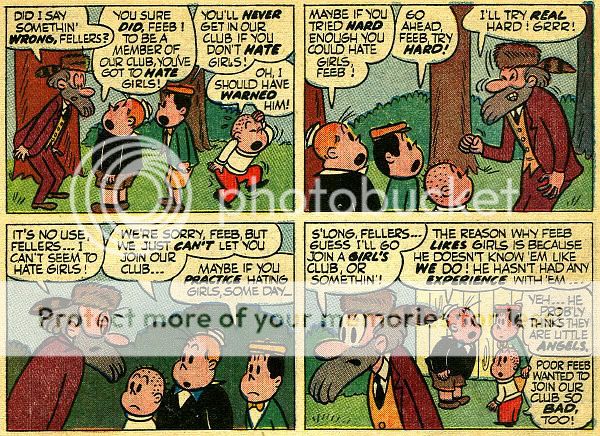
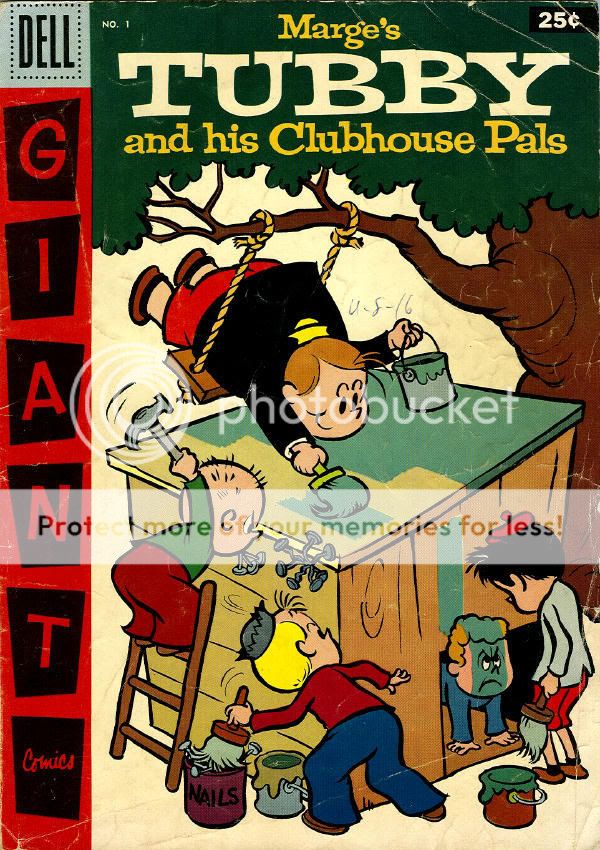
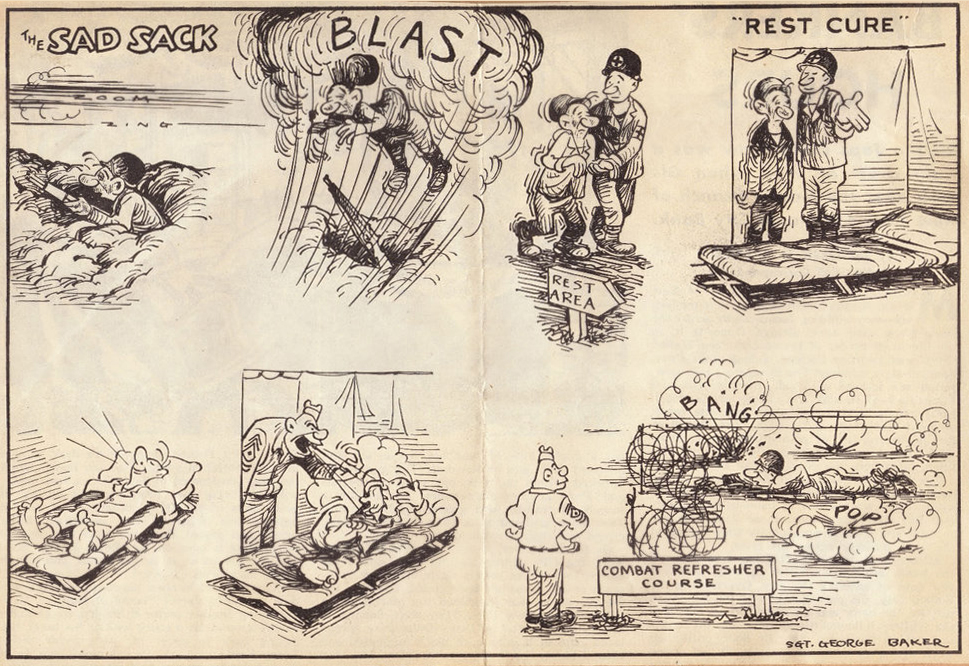
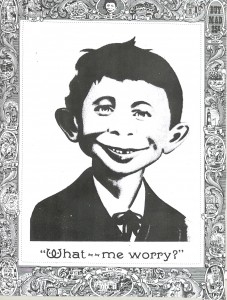
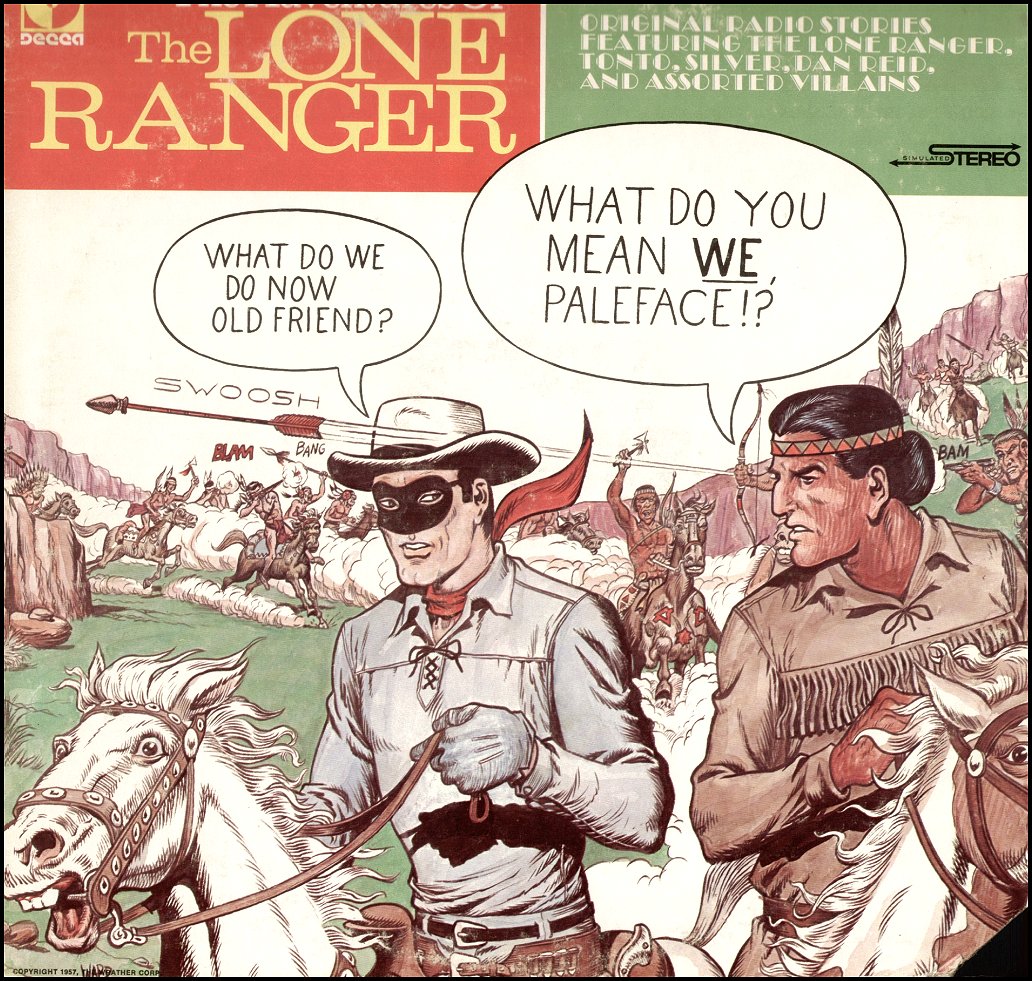



I’ve really been enjoying the series, Alex- looking forward to the last post. And that top image is really unbelievable….
Yeah…though to be fair it’s not cricket taking a single image out of context!
I don’t know if this really would count in your series, but do you know where “spa fon; squa tront” comes from? I see it pop up every so often in comics, and I know it must be some sort of in joke, but I’ve never found an explanation. Not that I’ve searched for it or anything…
Also, for another suggestion from Mad, how about “the usual gang of idiots”? That’s a saying that I see repeated here and there, and I think that’s where it originated.
I’ve also really dug this series too. It could go on forever, I suspect.
Hey, Matt. ‘Spa Fon’, ‘Squa Tront’and ‘Qua Brot’ were used as ‘alien’ exclamations in the EC science-fiction comics, “Weird Science” and “Weird Fantasy”. They were taken up by EC fans like me. (EC was also the publisher of Mad magazine). I haven’t included them because they haven’t made it out of the fan subculture.
‘The usual gang of idiots’? Let me think…
In response to your comments on the image where Batman says:
“Robin what have I done to you?”
Has it ever occurred to you that a gentle pat on the shoulder, a hug and a kiss on his head goodnight( which he did as his father) or sparring and working on a case in the batcave?
there are many different ways crime fighting partners as well as Fathers and sons touch each other they don’t all have to be sexual. None of the other crime fighters had kids Batman was the only one. So of course he’s going to be worried about his son.
It’s still funny, though!
My sarcasm was directed more at the alarmist prudes like Dr Wertham, Jude.